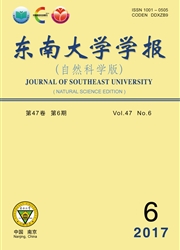

 中文摘要:
中文摘要:
预应力混凝土斜拉桥中,主梁的湿接缝往往是结构受力的薄弱部位。为揭示湿接缝的破坏机制,建立了天津永和大桥的施工阶段分析模型,计算了主跨合龙段与相邻预制节段之间的湿接缝的混凝土应力状态,分析了活载超载、拉索松弛及混凝土收缩徐变等多种因素对湿接缝混凝土应力的影响,同时也阐明了主跨合龙段的预应力钢筋、湿接缝的位置、湿接缝的施工质量等构造方面的固有缺陷。研究表明:长期超载运营是造成湿接缝破坏的最主要的因素,而运营期间拉索的松弛和混凝土的收缩徐变等因素是造成湿接缝破坏的不可忽略的原因。另外,湿接缝在桥跨中所处的位置、合龙段预应力钢筋的布置方式、新老混凝土结合面的处理方式及其普通钢筋配筋率等均是造成湿接缝破坏的内部因素。结合研究结果,从设计、施工、养护等层面上提出了相应的建议。
 英文摘要:
英文摘要:
Wet joints of a main girder were usually structural weak parts in a prestressed concrete cable-stayed bridge. In order to reveal the failure mechanism of wet joints, a construction stage analysis model for Yonghe Bridge in Tianjin was established, and then concrete stresses of the wet joint between the closure segment of main span and one of its neighboring precast segments were calculated. Using this model, the influences of the overload effect of living loads, relaxation of stay cables, concrete shrinkage and creep to the concrete stress state of wet joints were analyzed. Thereafter, some configuration defects at wet joints were elucidated. Studies showed that overloading for a long service period was the most important factor for failure of wet joints. Moreover, some factors in service, such as the stay cable relaxation or concrete shrinkage and creep, could also contribute to the failure. In addition, the position of wet joints in bridge spans, the layout of prestressed steels of the closure segment, the treatment of joint surface between new and old concrete, and the reinforcement ratio at joints were the internal factors of failure. Based on these conclusions, some suggestions were provided in terms of design, construction, and maintenance.
 同期刊论文项目
同期刊论文项目
 同项目期刊论文
同项目期刊论文
 期刊信息
期刊信息
